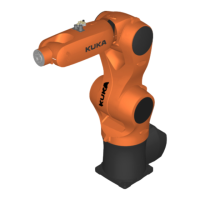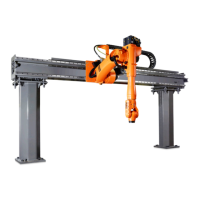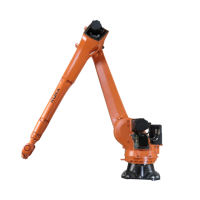122 / 141 Issued: 28.03.2013 Version: MA KR AGILUS sixx V8 en (PDF)
KR AGILUS sixx
9.2.1.10 Stability and reactivity
9.2.1.11 Toxicological information
No health problems expected if used for the intended purpose.
9.2.1.12 Ecological information
9.2.1.13 Disposal information
The product must be disposed of in an authorized incineration plant in accor-
dance with the applicable regulations on hazardous waste.
Contains no halogen compounds or heavy metals.
9.2.1.14 Transport information
Thermal decomposition: > 220 °C
Hazardous decomposition
products:
None known if handled and stored correctly. In the case of
improper use above the decomposition temperature, or in the
event of a fire, harmful vapors may arise (carbon monoxide).
Hazardous reactions: With strong oxidants (e.g. liquid or compressed oxygen), very
strong acids, very strong alkalis.
Oral toxicity:
(analogy observation)
LD
50
> 2,000 mg/kg (rat).
Epidermal toxicity:
(analogy observation)
One ingredient of the grease may cause weak skin irritation in
the case of frequent or excessive contact.
Water hazard classification
1 (WGK):
Minor water hazard (classification acc. to German Administra-
tive Regulation on the Classification of Substances Hazardous
to Water into Water Hazard Classes (VwVwS), dated May
1999).
Prevent from entering the soil, surface waters, groundwater or
the drainage system.
LAGA waste code: 542 02: for waste grease.
542 09: for solid materials contaminated with grease or oil.
EWC waste code: 12 01 12: for used waxes and greases.
15 02 99 D1: for used absorbent and filter materials, cleaning
rags and protective clothing with harmful contaminants.
17 02 99 D1: for used wood, glass and plastics with harmful
contaminants (e.g. lubricant residues in plastic tubes).
ADR/RID Not hazardous
Hazard number (Kemler
code):
- Substance code (UN no.): -
Packaging group: - Hazard label: -
Class: -
GGVSee/IMDG code Not hazardous
IMDG code: - UN no.: -

